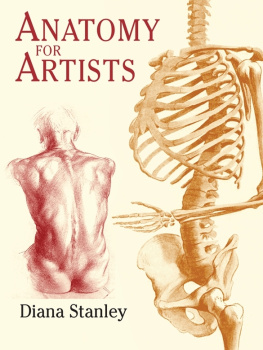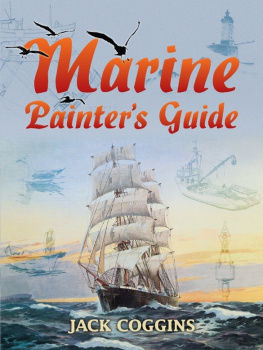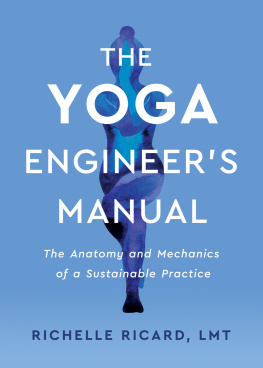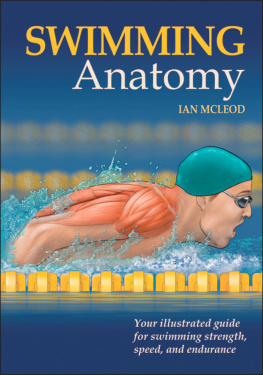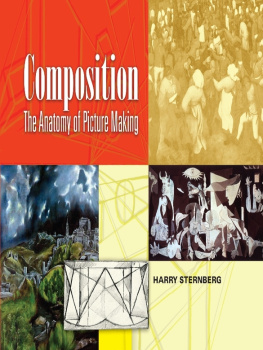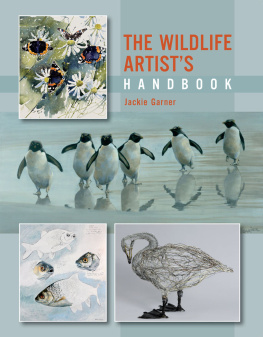ANATOMY, PERSPECTIVE AND COMPOSITION
FOR THE ARTIST
Stan Smith
Dover Publications, Inc.
Mineola, New York
Copyright
Copyright 1984 by QED Publishing
All rights reserved.
Bibliographical Note
This Dover edition, first published in 2014, is an unabridged republication of the work originally published by New Burlington Books, London, in 1989.
Library of Congress Cataloging-in-Publication Data
Smith, Stan, 1929-2001.
Anatomy, perspective and composition for the artist / Stan Smith.
p. cm.
This Dover edition, first published in 2014, is an unabridged republication of the work orginally published by New Burlington Books, London, in 1989.
Includes index.
Summary: This volume of practical instruction in the foundations of art features many splendid color illustrations by the author. Perfect for intermediate-level and advanced artists wishing to take their work to the next level, this book combines detailed anatomy studies with guidance in the principles and practice of perspective and the art of compositionProvided by publisher.
eISBN-13: 978-0-486-78302-4
1. ArtTechnique. I. Title.
N7430.S547 2014
701.8dc23
2013025243
Manufactured in the United States by Courier Corporation
49299001 2014
www.doverpublications.com
FOREWORD
An artist can transpose a burst of mental energy into an image of wonder and delight, creating illusion and bringing beauty into the world. This quality of original and personal creation is the essence of art the common factor in all good, not to say great, works of art. But, how is it acquired? Some will say it evades but a few. Yet, it can be encouraged, enticed and even provoked. By providing a solid foundation from which it can spring, the creative impulse will more readily seek its freedom. Through the knowledge of a basic artistic vocabulary, including anatomy, perspective and composition, that foundation can be provided.
At face value, a work of art exists within its own unique terms of reference, bounded only by the outer edges and containing all the energy, sensitivity and personality of the artist. He or she will create the wonderful magical imagery according to the demands of the heart and mind, bringing to us a statement in colour, form, line and rhythm, which encapsulates whether the artist likes it or not personal experience, prejudice and stress. The emotions and intellect will filter through a mass of acquired knowledge and experience before emerging in the form of the work of art and, as often as not, will be both dependent and conditioned by them. No matter how strong and personal the commitment, how passionate the determination, without the incorporation of this historically established visual grammar, the essential disciplines are very hard to find.
This visual grammar is evident in the work of the Great Masters. It is from looking at these works that the artist can witness the theory in practice. The ingenious ways these theories have been used will also demonstrate how there is no one solution from any one source, but afresh discovery within the strictures imposed. It is essential to experiment, risk and search for originality aided by such study.
Knowledge and understanding of anatomy, perspective and composition will provide the basic tenets of visual representation. Assimilation of such knowledge and the practice of their principles will emerge spontaneously as we draw. Seeing for an artist is very different from the everyday seeing which enables us to recognize and move about in our surroundings. In our lives we are presented with a chaotic assortment of impressions from which, as artists, we must select the visual shorthand expressed through the relationships between points, lines, spaces, tones and colours which adequately conveys our observations and emotions. Only practice and understanding will help us choose and judge correctly.
Knowledge of anatomy will help the artist to look at a seated figure and sum up the basic tensions and emphasis within that figure. It is common to be versed only in the map of the human figure but this tends towards a two-dimensional interpretation. In the section on anatomy, an attempt has been made to create a three-dimensional view of the bones of the skeleton and the musculature of the human form. The full richness of the complex human machine is demonstrated in action.
A study of perspective will show the artist how to create an illusion of space beyond the picture surface. Theories concerning the relationship of objects and figures within a three-dimensional space and how these can be represented on a two-dimensional surface will be explained. Much successful representative art is achieved through the discovery of the difference between what we know and what we see it reveals the discrepancy between the appearance of an object and our preconceived ideas of what it looks like.
Finally, the study of compositional theory throws new light on the history of art. It explains the seeming inevitability of so many great masterpieces. It can be used to spark off the artists imagination whilst creating a solid base for the work. It also can solve a universal artistic problem: where and how to start.
This book aims to make available the mechanics by which the magic of picture-making is achieved. It elucidates the complexities of human anatomy, perspective and composition and creates a sound reference book which can be retained for consultation long after the initial lessons have been learned.

1 ANATOMY
INTRODUCTION
Knowledge of the bones and muscles of the body helps the artist to read the form and balance of a pose, giving authority to a figure drawing.
Most anatomical text books are researched and written by medical men, where the stress is on function. These works can be very useful to the artist as knowledge of the workings of the human body can be an aid to figure-drawing. Some artists, however, feel that detailed anatomical knowledge is not necessary and that those concerned with figure-drawing should limit their acquisition of knowledge to the fundamental structure of the human form.
The answer must fall somewhere between these two extremes. Certainly, too much concern with study of a scientific nature can be distracting, at best, and seductive, at worst. There is a need to tread warily so as to avoid becoming so involved in physiology and detailed anatomy that the inspiration of a drawing or painting is lost. Then, rather than the study being an aid to the intended composition, it becomes an end in itself.
The artist must, on the other hand, have some knowledge of what lies underneath the human skin, to lend credibility to his figure-drawing. He will have difficulty, for example, in producing a convincing drawing of an upholstered chair, if all he knows about is the material that covers it; some knowledge of the basic structure and stuffing is essential. It is not necessary, though, to learn the name of every bone and muscle, but an appreciation of function, with relation to movement and balance, and the effect on the body form is a great aid to figure-drawing.
The maxim that shape is dependent upon function is generally true of the human body. In instances where leverage or hingeing is necessary, there is a simple visual explanation, just as there is where counter-rhythms are employed to retain balance in a biped. In some complicated movements, however, it can be very difficult to understand what is happening to the muscles and bones. For example, the turn of the forearm from pronation to supination from palm facing upwards to palm facing downwards involves a beautiful series of interrelated movements of the two bones of the forearm, the ulna and radius, both surface and buried muscle, and the movement of major and minor blood vessels. This sounds overcomplicated, but, in general, the artist making a figure study needs only to know the basic configurations knowledge of the appearance of the body when movement is completed and an understanding of the muscles and bones involved in the completed action are sufficient.




